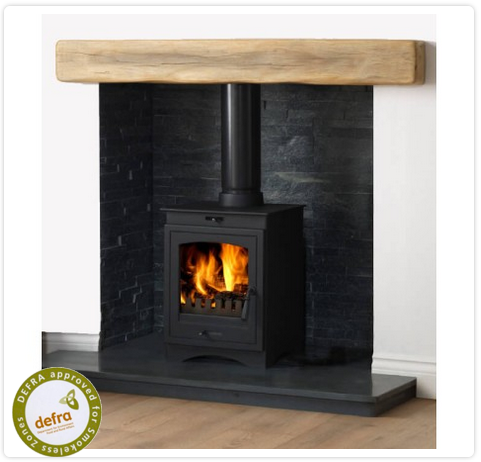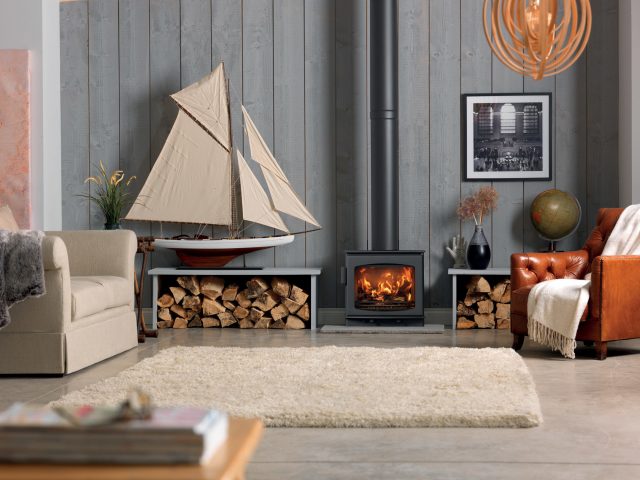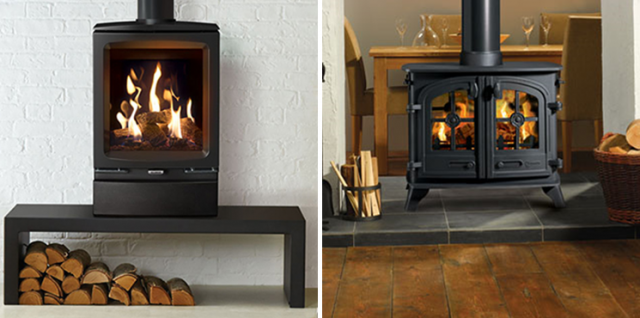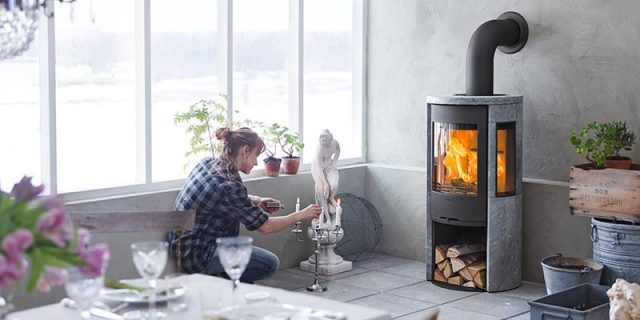The Helios 5 Multi-Fuel Stove is considered by many people to be an entry-level store of although this is not really a fair description. The long description is Helios 5 Cleanburn Defra Approved Multi-Fuel Stove, burning wood and approved solid fuels, which obviously highlights the fact it is Defra approved for use in smoke control areas. This is not one of those cheap and cheerful multifuel stoves you see in bargain basements, this is one of a range of Helios Stoves which are already making a strong impact on the market. As we look to review the Helios 5 Cleanburn Defra Approved Multi-Fuel Stove it is worth reminding ourselves it is available for less than £500.
Look and feel of the Helios 5 Stove
If there was one phrase to describe this stove it would be a “traditional multifuel stove” with an old world look and feel, creating the exact atmosphere you would expect. While the stove itself is relatively small, the viewing area is relatively large which allows you to watch the flickering flames and the burning embers. Even though the heat capacity is around 5 kW you will feel the impact of the heat created by this impressive wood-burning stove. In some ways it is the decorative edging around the viewing area which makes it stand out, gives it a little character and draws your attention.





